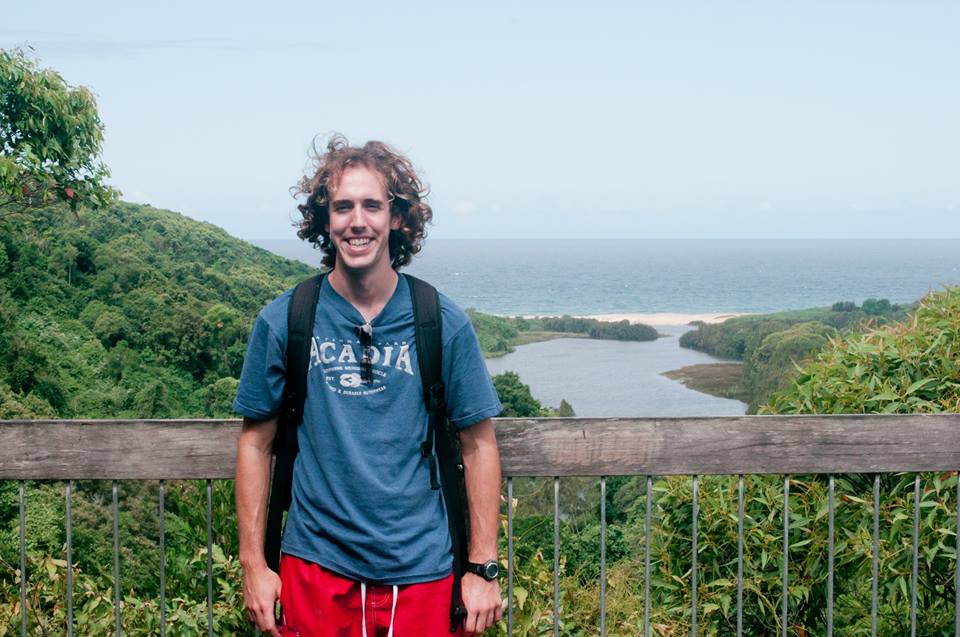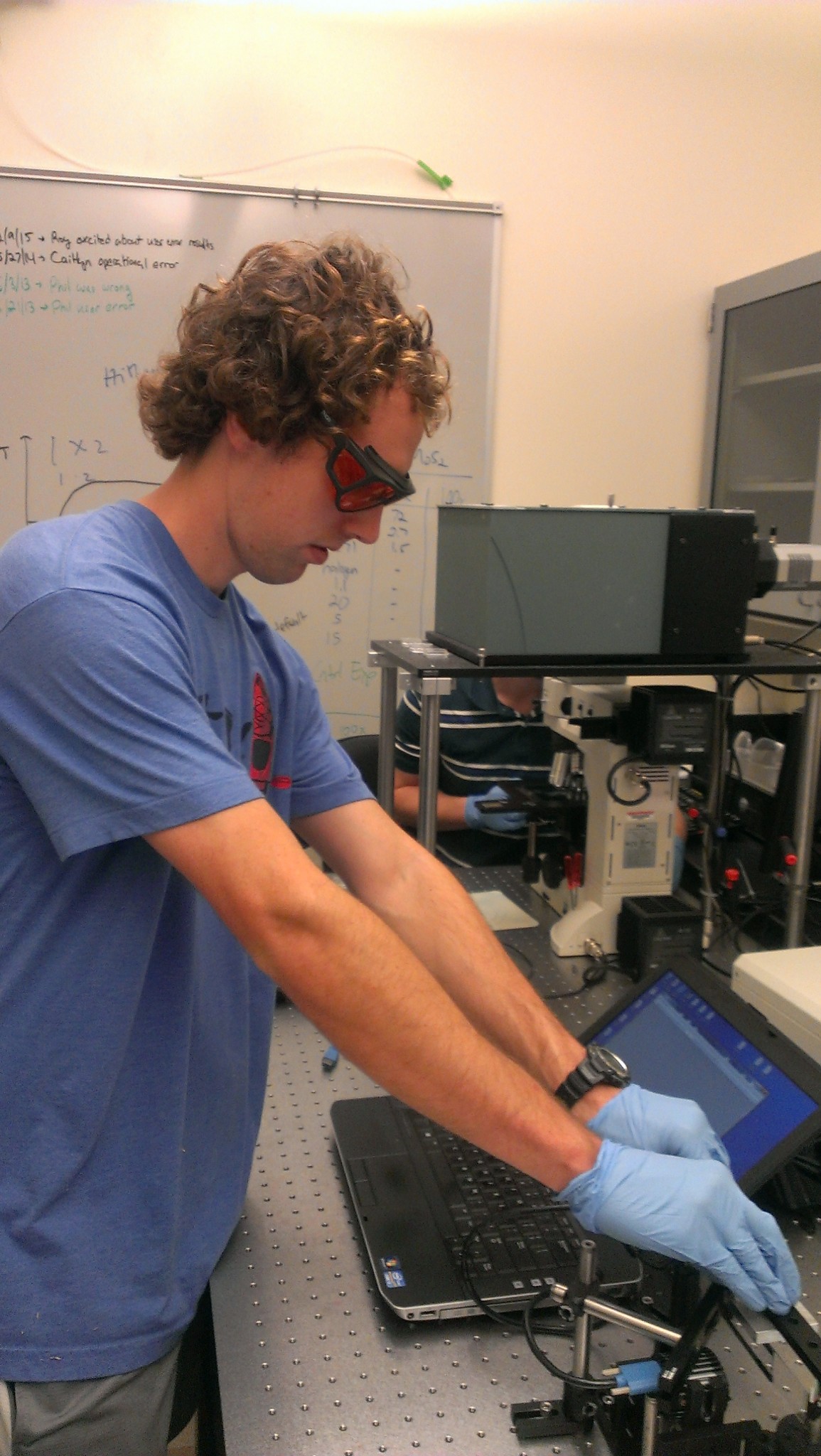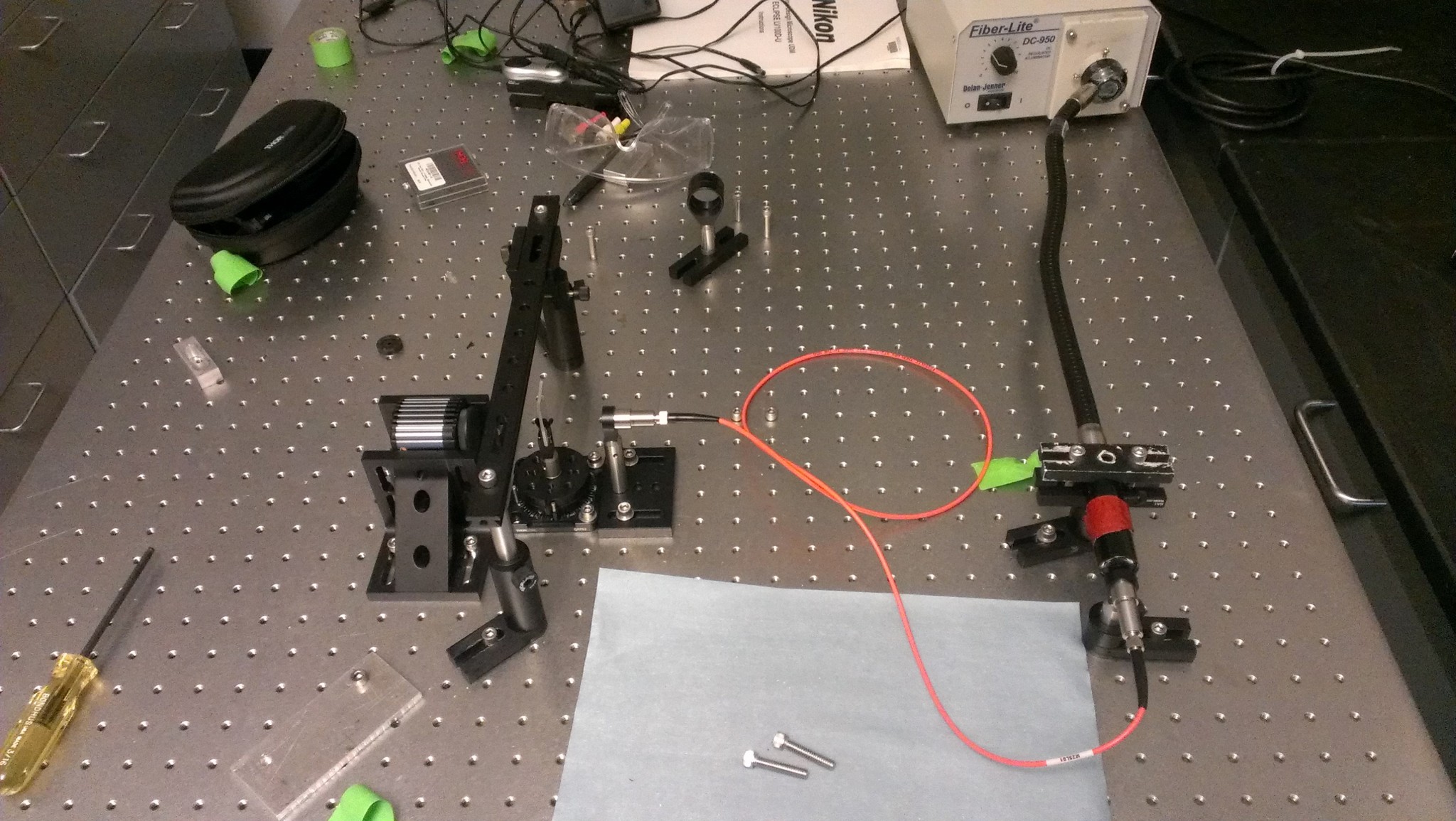David Jacobson, an honors chemical engineering and physics junior, is helping us learn a little more about gold nanoparticles and their “nearly futuristic applications,” from the improvement of solar panels to the creation of cloaking devices (James Bondesque invisible sports coupe, anyone?). With laser beams and sometimes erratic lab equipment as his tools, Jacobson’s work might sound like science fiction, but under the direction of Dr. Roper, he’s been able to create real-world understanding about how light is scattered.
I began my research in the spring semester of 2015 under the direction of Dr. Keith Roper. Dr. Roper’s research group studies how gold nanoparticles (very small pieces of gold) interact with light to produce novel and even once thought impossible optical effects. My particular project was to build and use a laser beam profiling device for characterizing nanoparticle light interactions. Laser beam profiling is a technique where you measure the power distribution of a laser by shining it into a camera and compare the brightness of image pixels in the resulting image. In my case, I was shining the laser through gold nanoparticles embedded in transparent plastics in order to see how those gold nanoparticles changed the shape and brightness of the laser beam.
Understanding how gold nanoparticles embedded in plastic interact with light seems somewhat abstract, but noble metal nanoparticles have some extraordinary optical properties with nearly futuristic applications. For example, the concentration, size and shape of gold nanoparticles in an array of nanoparticles all affect how that sample interacts with certain colors of light. These dependencies have already been used to increase the efficiencies of solar panels by scattering incoming light to increase the chance of light interacting with the solar cell. On the other end of the spectrum, gold nanoparticle arrays can be manipulated to reduce the scattering of light which has possible cloaking applications.
Over the course of the spring semester, my time was largely spent building the beam profiling apparatus, as well as calibrating it for the particular experiments we are using. My work over the fall semester consisted of taking data, analyzing the results, making small changes to the beam profiling setup and analysis programs and then retaking data. Both of these processes proved exceptionally exciting when progress came quickly and exceptionally exhausting whenever I ran into particularly difficult problems. I worked closely with Gregory Forcherio, one of Dr. Roper’s graduate students, throughout this process. Greg was key in helping me overcome many of the problems that stumped me as well as in slowing me down whenever things were moving quickly and I got ahead of myself. Less frequently, I would consult with Dr. Roper about my progress in order to get a better big picture idea of where my project needed to go, as well as to fill in some of the gaps in my technical knowledge so I would better understand the more complex phenomena we were observing. Over all, this proved to be an effective method for getting work done, but I did not anticipate the sheer number of problems and difficulties I would run into before obtaining satisfactory results. Being made aware of and solving such problems was probably the biggest asset this research project has been to my education and career.
Many of these problems were of a trivial nature and had easily-implemented solutions once I figured them out. For example, the power output of the laser in my lab was being erratic during start up, but it turned out that if you simply let the power supply warm up for five minutes, the laser would operate fine. Other problems were much more complex and I never came up with a satisfactory solution for them. For example, after about two hours of operation the power output of the same laser would start to fluctuate again. I never was able to determine why this occurred and decided the best course of action was to not take data after the laser had been operating for more than two hours. These problems were frustrating in that they ate up a lot of time and inhibited me from answering the questions I wanted answered about gold nanoparticle arrays, but they also forced me to learn about much more than just my research topic. As a result of these problems I came away from this project with a knowledge of plasmonics, laser physics, CCD cameras, image processing, image data analysis and beam profiling methods.
Eventually I was able to generate useful data that indicated that an effect known as quantum diffraction was playing an appreciable role in how gold nanoparticles scatter light. Members of Dr. Roper’s research group have hypothesized this to be the case for some time but are still in the process of gathering evidence to confirm this. Once sufficient data has been gathered, my results may be included as part of a publication indicating that quantum diffraction does play an appreciable role in gold nanoparticle array interactions with light.
Although this particular project is over, I will stay plenty busy over the next year pursuing activities related to both research and other aspects of my education. This spring I will be studying abroad in Australia and over the fall I will busy with classes, working on my thesis and applying to graduate school. It is currently my intention to pursue a graduate degree in materials science with an emphasis in computational modelling. This decision was heavily influenced by the nanomaterials research I was able to pursue through my Honors College Research Grant. Aside from these objectives, I’m simply hoping to hang on and enjoy what’s left of my time in college.



